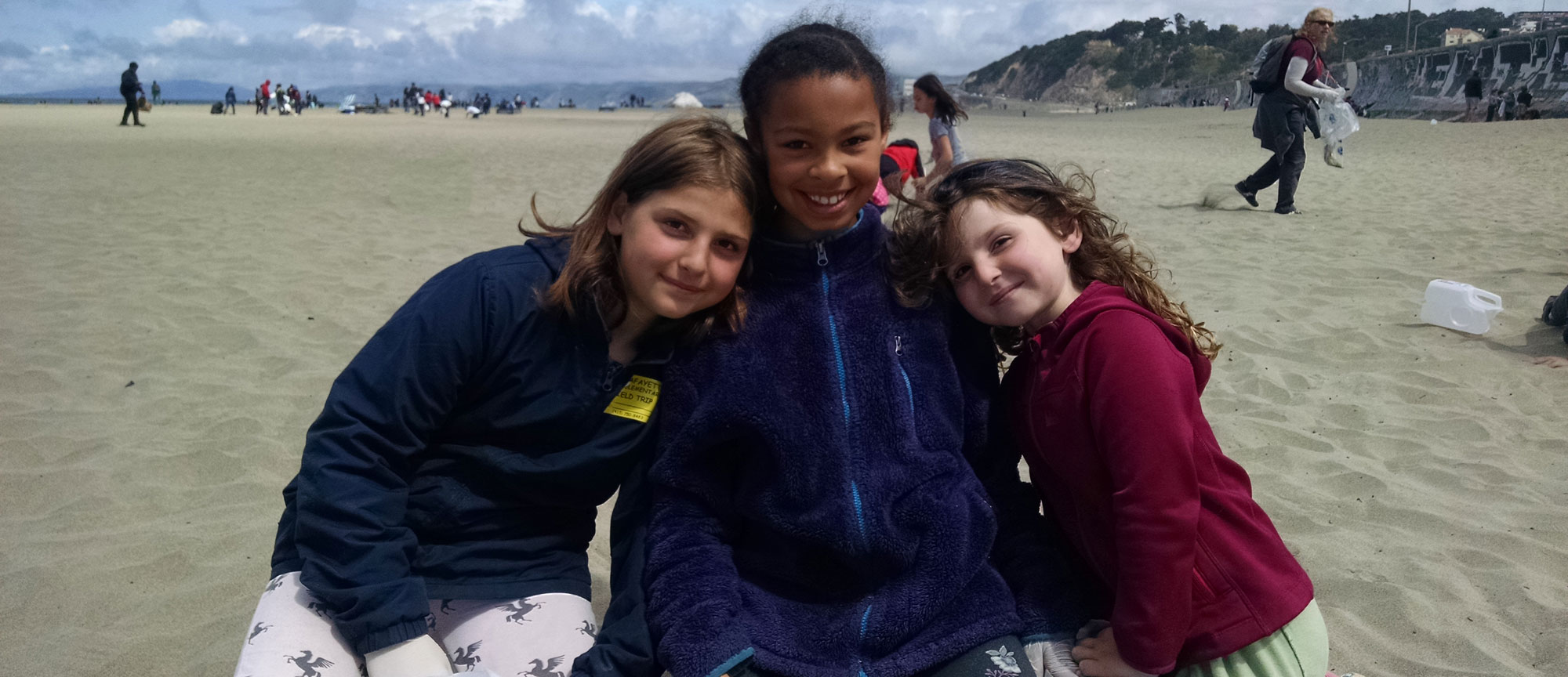
On Coastal Cleanup Day, California comes together to clean our beaches, lakes, waterways, and neighborhoods. Coastal Cleanup Day is the largest volunteer event in California and is a part of the International Coastal Cleanup, which takes place in 100 countries and 43 U.S. states. Your kids, classroom, or youth group can be a part of this monumental event, whether you get out to the coast or not! If trash isn't picked up inland, it may find its way into a storm drain and then out to a waterway and eventually the ocean. Litter on land is future marine debris.
If you'd like to safely clean your area, but a weekday works better than a Saturday, that's no problem. Please contact your local county coordinator, or organize a Schoolyard Cleanup.
You can print out the California Coastal Cleanup Day posters to post in community spaces, as well as download graphics that can be used on websites and social media.
The information that follows will provide you with additional resources and activities to enrich Coastal Cleanup Day for your students or children. Please contact us with any comments or questions as you guide your them through this experience: coast4u@coastal.ca.gov.
Educator Resources | Creativity | BYO For Your Cleanup
Visit the Schoolyard Cleanup Program webpage for extensive classroom lessons, informational links, recommended read-aloud books, videos, downloadable slideshows, and more. Schoolyard Cleanups can be done as part of Coastal Cleanup or any time of year. Find tips on doing "Schoolyard" cleanups at home during distance learning. We're encouraging people to use the free CleanSwell App to document the important data on the trash you collect, but if you'd prefer a paper data card for your students, you can print your own in English and Spanish.
Alternate Data Collection Methods for Younger Students:
Your students can create art or poetry based on their cleanup experience for the Coastal Art & Poetry Contest. Below are a few questions to help encourage their creative process.

Please plan ahead to reduce the waste generated by your cleanup. Following a "Bring Your Own" philosophy will allow you to save plastic bags and gloves that would otherwise be used during trash pick-up. Assign your students to bring work gloves (if available) and an item from home to use in collecting small trash items. (Larger trash items would need to be carried in bags, or hauled separately.) Some ideas for containers include:
As containers are filled, dump them into a central collection site, such as a dumpster, trash can, or large trash bag. The items students brought from home can be recycled after the cleanup, or you can continue to reuse them by providing your students with potting soil and seeds to create a small wildflower or herb planter. Be sure to punch holes in the bottom first.
If your students are packing a lunch to eat during the cleanup, try to make it "trash free." This means that students will strive to include no disposable items in their lunches. (Be mindful of students who receive free and reduced-cost lunches at school, as it may not be within their control to pack a lunch. Presenting cafeteria waste reduction suggestions to the principal or superintendent may a good alternative if this is an issue for your students. If students receive lunch in disposable packaging, making a special point about recycling and composting all possible elements and placing remaining items very carefully in trash cans is a valuable exercise.) Some tips on packing a trash-free lunch: